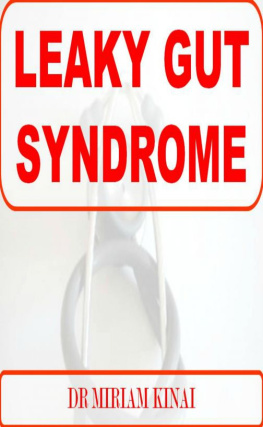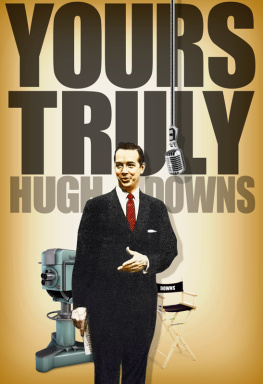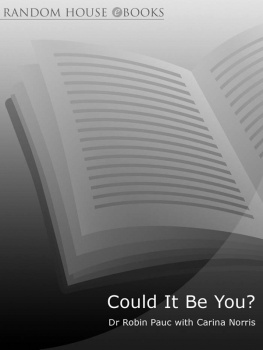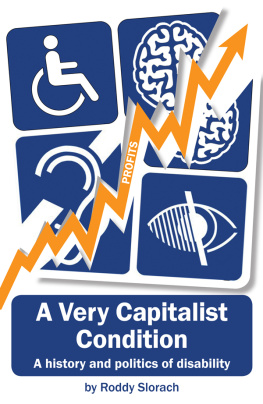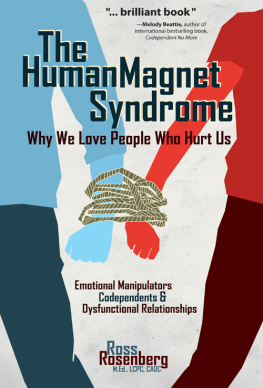Chris Nancollas - Downs Syndrome: The Biography
Here you can read online Chris Nancollas - Downs Syndrome: The Biography full text of the book (entire story) in english for free. Download pdf and epub, get meaning, cover and reviews about this ebook. year: 2012, publisher: Andrews UK, genre: Religion. Description of the work, (preface) as well as reviews are available. Best literature library LitArk.com created for fans of good reading and offers a wide selection of genres:
Romance novel
Science fiction
Adventure
Detective
Science
History
Home and family
Prose
Art
Politics
Computer
Non-fiction
Religion
Business
Children
Humor
Choose a favorite category and find really read worthwhile books. Enjoy immersion in the world of imagination, feel the emotions of the characters or learn something new for yourself, make an fascinating discovery.

- Book:Downs Syndrome: The Biography
- Author:
- Publisher:Andrews UK
- Genre:
- Year:2012
- Rating:5 / 5
- Favourites:Add to favourites
- Your mark:
- 100
- 1
- 2
- 3
- 4
- 5
Downs Syndrome: The Biography: summary, description and annotation
We offer to read an annotation, description, summary or preface (depends on what the author of the book "Downs Syndrome: The Biography" wrote himself). If you haven't found the necessary information about the book — write in the comments, we will try to find it.
The first ever general trade biography of Downs Syndrome, tracing the history of the condition within the context of human civilization, and societal attitudes towards otherness, learning disability and mental illness.
Downs Syndrome: The Biography — read online for free the complete book (whole text) full work
Below is the text of the book, divided by pages. System saving the place of the last page read, allows you to conveniently read the book "Downs Syndrome: The Biography" online for free, without having to search again every time where you left off. Put a bookmark, and you can go to the page where you finished reading at any time.
Font size:
Interval:
Bookmark:
Title Page
DOWNS SYNDROME
The Biography
By
Chris Nancollas
Publisher Information
First published in 2012 by
Darton, Longman and Todd Ltd
1 Spencer Court
140 - 142 Wandsworth High Street
London SW18 4JJ
Digital edition converted and
Distributed in 2012 by
Andrews UK Limited
www.andrewsuk.com
2012 Chris Nancollas
The right of Chris Nancollas to be identified as the Author of this work has been asserted in accordance with the copyright, Designs and Patnets Act 1998.
Phototypeset by Kerrypress Ltd, Luton, Bedfordshire.
Acknowledgements
This book would not have been written without the advice and support of many people, but two in particular stand out. The original idea for a biography of Downs syndrome came from Will Parkes, commissioning editor at Darton, Longman and Todd, who also drew up the outline for the books content. Will has been a constant support throughout the process. The idea was pitched to me (I think that is the term) by my old friend Brendan Walsh, the former editorial director of DLT, over a working breakfast at Paddington station. I had always told myself that one day I would be a published writer, and I am deeply grateful to the two of them for giving me this opportunity.
I am very grateful to the staff and pupils at the Heart of the Forest special school, who allowed me to see the teaching of children with learning difficulties at first hand. Particular thanks are due to Melissa Bradshaw, who acted as my guide and principal source of information.
I am equally indebted to the Forest of Dean Community Learning Disability Team for bringing me up to date with their work. The team comprised Terry White, Occupational Therapist, Julie Ann Gwilliam, Specialist LD Nurse, and Ruth Proctor, Speech and Language Therapist. Thanks are also due to Dr Paul Winterbottom, Consultant Psychiatrist, for his advice about current treatments for Downs syndrome.
My old friends and colleagues Alison Melton, Bob Swannack, Jeff and Sally Longley, and Tom Cullen were of great help in putting my thoughts in context. Chris and Alice Draisey also helped with information. David and Ann Adams also read part of the manuscript, and their advice about the prose style was very useful. Special thanks are due also to the Walsh family, of Ball intemple, Cork, for their encouragement over the years.
Finally, the book is dedicated to my wife, Sue, and my children, Tom, Sarah and Robert, who have had to put up with me over the years. It is bad enough sharing a house with a doctor, let alone a budding author, and they have been very understanding, especially given my frequent lapses into moodiness and distraction. I hope this goes some way towards repaying the debt.
Langdon Down
The story of Downs syndrome begins in the unlikely setting of the small Cornish town of Torpoint. This ancient ferry port sits across the estuary of the River Tamar from the city of Plymouth, one of Englands most famous ports, where Drake played bowls before defeating the Spanish Armada, and the Pilgrim Fathers set sail for America. Torpoint was once a thriving centre of Cornwalls trade with Plymouth and a typical maritime town, full of commerce and grog shops and wild living, the first port of call for Nelsons press gangs. Then, in 1961, the Tamar Bridge was constructed, and Torpoint became a backwater, nestling unnoticed in the lee of the Rame peninsula.
Small forgotten Cornish towns do not generally have many internationally famous sons, but Torpoint has two. The first is the sailor Pete Goss, who sailed through a hurricane to rescue a French sailor in the Vende round-the-world race, and was awarded the Lgion dHonneur for his pains. The second is the physician John Langdon Down, the man who described the syndrome that bears his name.
John Langdon Haydon Down was born in Torpoint on 18 November 1828, the son of the local apothecary. He was educated across the water in Plymouth, and worked with his father as an apothecary from the age of 14. Downs intelligence and aptitude for science were apparent from an early age, and at 18 he went to London and became apprenticed to a barber surgeon, Matthew Coleman, on the Whitechapel Road. Surgery in those days was a fairly rudimentary affair, and Downs duties comprised bleeding patients, pulling teeth and washing bottles. The work was so crude that barber surgeons were refused the title of physick, or doctor, having to do with plain Mister. In an affectation of which the medical profession is justly proud, surgeons today are still referred to as Mr rather than Dr.
Down did not progress much further as a barber surgeon, but was pushed by his family to study for his pharmaceutical exams. He attended the Royal Pharmaceutical Society in Bloomsbury where Michael Faraday was one of the lecturers, teaching the young Down about the properties of gases. Although he was not sure about pharmacy as a career, Langdon Down proved to be an outstanding student, gaining the Gold Medal for organic chemis- try. He qualified in 1848, but did not register as a pharmacist. His mind was elsewhere.
His family, however, needed a pharmacist, and Down was pressurised to return to Torpoint. Although his elder brother had studied pharmacy, he had not qualified, and the rules had changed to demand the presence of a qualified pharmacist in the shop. He may also have returned because he was unwell, possibly with TB, and needed a place to convalesce. He resumed work in his fathers shop, which was now being run by his elder brother Richard, and it seems that this was not a happy arrangement. The shop was badly run - Joseph Down, the father, had faced bank- ruptcy three times - and Down lacked the skills and the enthusiasm to be a successful businessman. In addition to being a pharmacy the shop was also a grocers, tea merchant, coffee grinder and drapers, and Langdon Down wanted more from life than a striped apron and the daily grind of high street retailing.
His father died in 1853, and Langdon Down felt free to leave and follow his own goals, deciding to become a doctor. He entered the London Hospital in Whitechapel that year, and quickly gained a reputation as an exceptional student, winning the Gold Medals for surgery, midwifery and medicine, and the London Hospital medal for the outstanding student of the year. Twice now he had entered London colleges and excelled, and all this from a relatively humble background. He qualified as a physician in 1856.
He had become a doctor at an exciting time for medicine. The previous hundred years, the Age of Enlightenment, had seen the treatment of illness move from a haphazard mix of folklore and superstition to a discipline firmly grounded in scientific principles. The second half of the nineteenth century saw this process acceler- ate, and in this short period of fifty years the practice of medicine was revolutionised.
In 1846, William Morton, of Massachusetts, used ether as a general anaesthetic for the first time. The next year, in Britain, James Simpson administered chloroform to relieve the pain of childbirth. The use of general anaesthesia transformed the practice of surgery and obstetrics, making it possible to perform lengthy, more complex operations.
Smallpox vaccination was made compulsory in 1853. A year later, John Snow, the doctor who had anaesthetised Queen Victo- ria for the birth of Prince Leopold, ended a cholera epidemic by dismantling the water pump at Broad Street in London. This demonstrated that diseases were carried in contaminated water, and inspired the programme of public works that led to the creation of separate water and sewage systems. This was arguably the single most important public health intervention of all time, and one only has to see how rapidly water-borne disease returns in natural disasters to realise how much we take it for granted. (The second most important was the establishment of regular refuse collections, and it is often forgotten that the water board and your local dustmen are as important for your health as your doctor.)
Next pageFont size:
Interval:
Bookmark:
Similar books «Downs Syndrome: The Biography»
Look at similar books to Downs Syndrome: The Biography. We have selected literature similar in name and meaning in the hope of providing readers with more options to find new, interesting, not yet read works.
Discussion, reviews of the book Downs Syndrome: The Biography and just readers' own opinions. Leave your comments, write what you think about the work, its meaning or the main characters. Specify what exactly you liked and what you didn't like, and why you think so.


